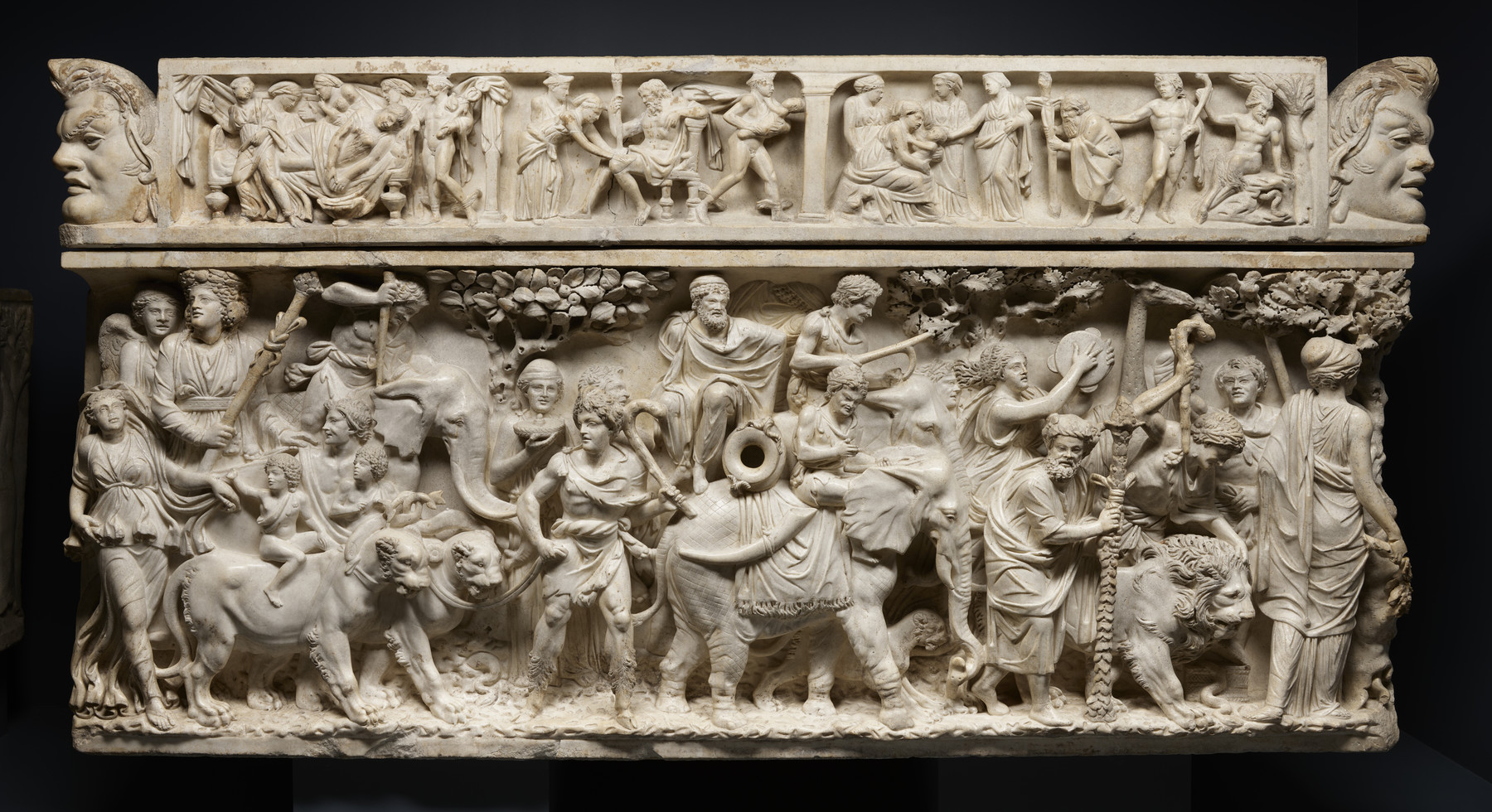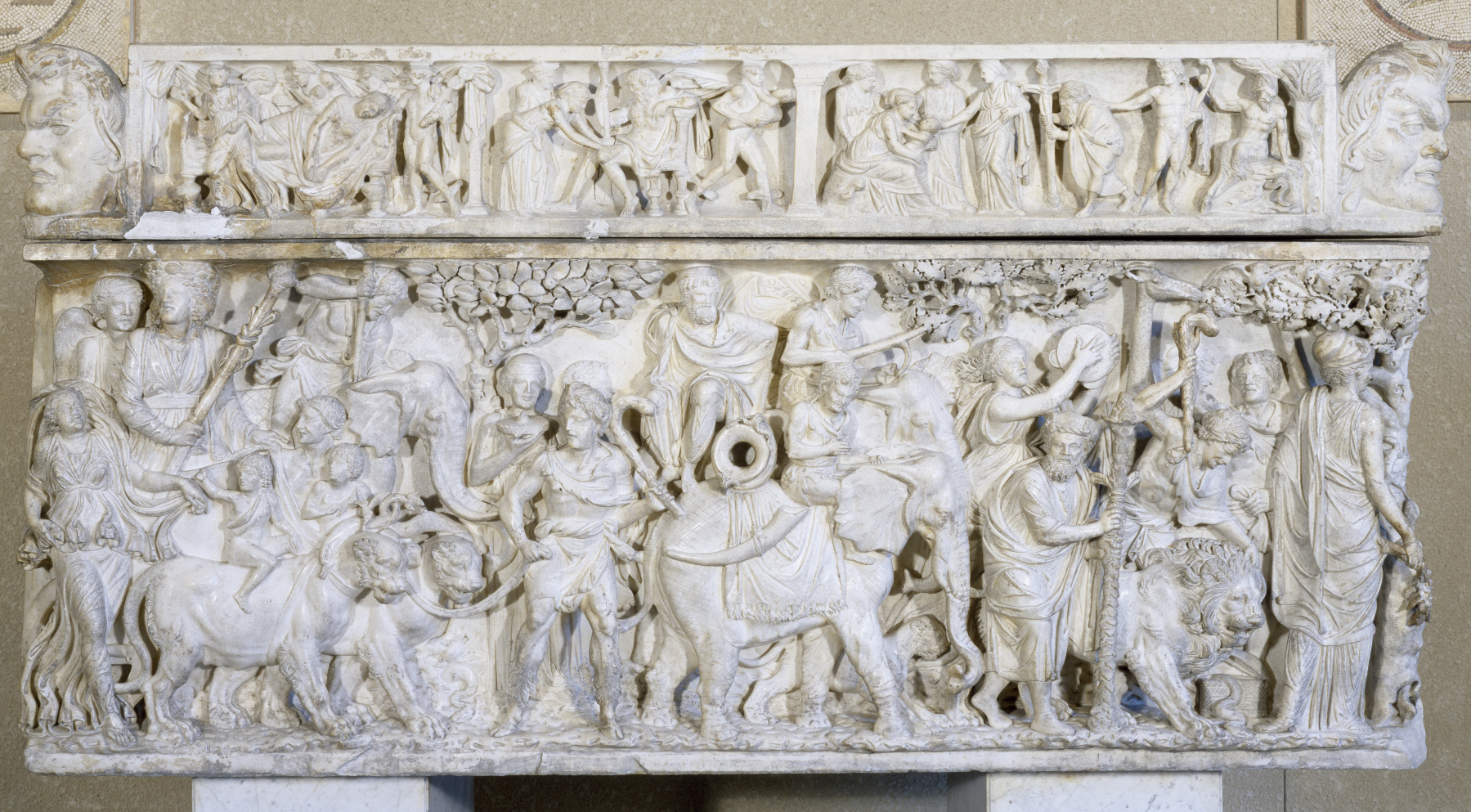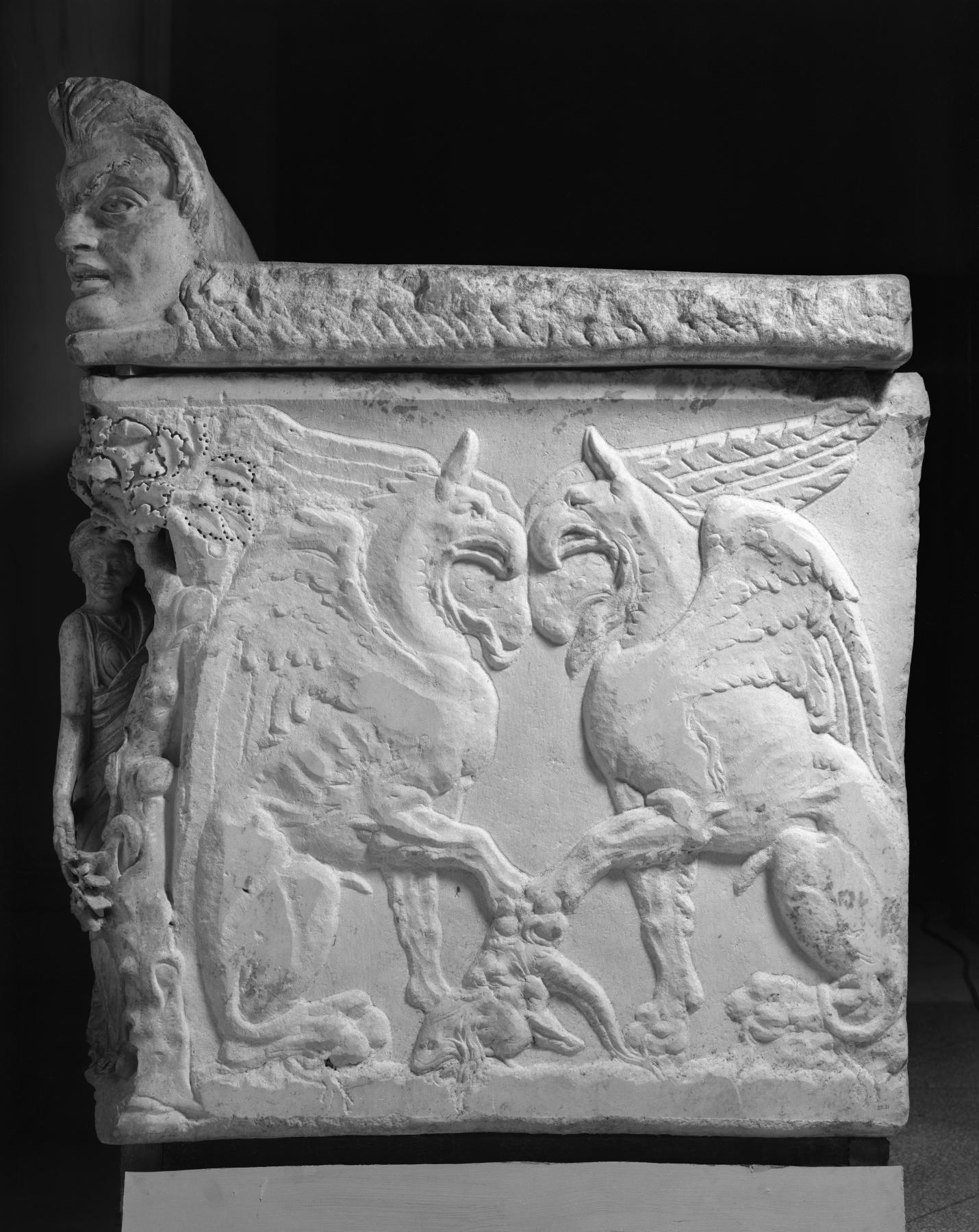Sarcophagus with the Triumph of Dionysus
(Roman Empire )
The triumphal march of Dionysus (or Bacchus, as he was generally known in Rome) through the lands of India was equated in Roman thought with the triumph of the deceased over death. At the left, Dionysus rides in a chariot pulled by panthers. Preceding him is a procession of his followers and exotic animals, including lions, elephants, and even a giraffe. A bird's nest is concealed in the tree at the far right; on the same tree a snake is pursuing a lizard. Many of the animals depicted had special significance in the mystery cult of Dionysus Sabazius. On the lid is the birth of Dionysus and his reception by nymphs, shown between satyr heads (on the ends), one smiling and one frowning. The enormous attention to detail on this sarcophagus exemplifies the talents of the best Roman relief carvers.
Provenance
Provenance (from the French provenir, 'to come from/forth') is the chronology of the ownership, custody, or location of a historical object. Learn more about provenance at the Walters.
[Excavated from the so-called Licinian tomb, via Piave, Rome, 1885]; Clemente Maraini, 1885, by excavation; Don Marcello Massarenti, Rome, by 1894, by purchase [marble no. 1]; Henry Walters, Baltimore, 1902, by purchase; Walters Art Museum, 1931, by bequest.
Conservation
| Date | Description | Narrative |
|---|---|---|
| 5/19/1958 | Treatment | cleaned |
| 6/21/1961 | Treatment | cleaned |
| 4/1/1966 | Treatment | cleaned |
| 7/20/1970 | Treatment | cleaned |
| 6/27/1973 | Treatment | cleaned; repaired |
| 10/25/1984 | Treatment | repaired; coated; loss compensation |
| 1/1/1992 | Technical Report | x-ray diffraction; other |
| 1/1/1998 | Treatment | cleaned |
Measurements
H including lid: 47 1/2 x W: 92 1/2 x D: 40 in. (120.7 x 234.9 x 101.6 cm); H without lid: 35 13/16 in. (90.96 cm)
Credit Line
Acquired by Henry Walters with the Massarenti Collection, 1902
Location in Museum
Accession Number
In libraries, galleries, museums, and archives, an accession number is a unique identifier assigned to each object in the collection.
In libraries, galleries, museums, and archives, an accession number is a unique identifier assigned to each object in the collection.
23.31










